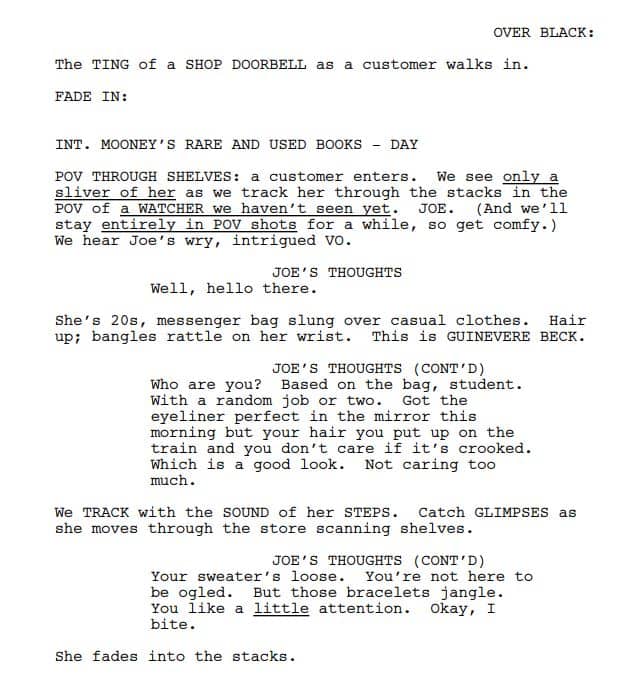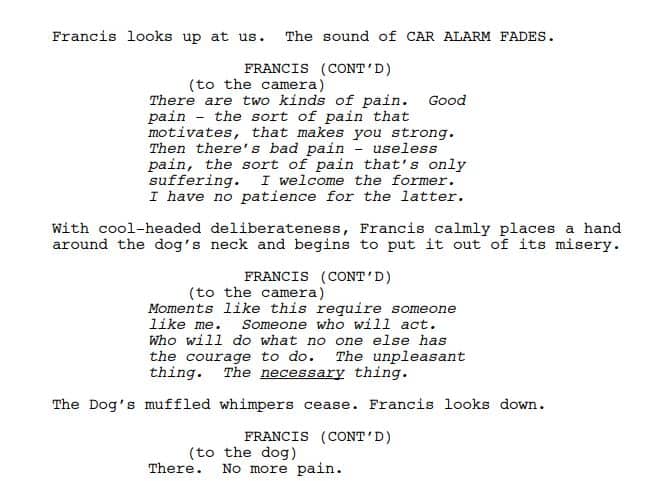You know that voice.
That voice in your head that you’re using to read this right now.
How do we get that voice onto the script in a way that readers will understand?
How do you write an interior monologue in a script? You write an inner monologue in a script by First writing your character’s name followed by “(V.O).” Which stands for voice over. After that, you then write your monologue as normal dialogue. For example:
Richard (V.O)
Does he even know the stress he's putting me under with this decision?
Different Ways of Writing an Inner Monologue
Yes, there are different ways to write an inner monologue. The first way is shown above and is a great basic example. We have some better script examples we can pull from recent famed Netflix dramas. One is “You” the other being “House of Cards.”


Why you should or shouldn’t use interior Monologue
Now let’s go into detail on the pros and cons of using this technique for your next script. Not every script needs this.
Why You Wouldn’t Use It.
1.) Actions speak louder than words (Show don’t Tell)
One of the most important rules in screenwriting is to show don’t tell. The rule is meant to force writers to write visually. When you use inner Monologue you run the mistake of adding more than is necessary making for a boring script.
2.) Too much narration
David Mamet a teacher of screenplays tells us that narration can kill a script faster than anything. Your screenplay can turn into a weather forecast giving the audience everything they need to know before any of it happens.
3.) Breaking the fourth wall
Every use of the Interior monologue is breaking the fourth wall. Because you are addressing the audience only. When you break the fourth wall it’s extremely hard for directors to get the audience back into the story once the allusion is revealed.
Why You Would Use It.
1.) Character development
Both examples of the inner dialogue given above show character in a way that works well for the story. Think to yourself how does display an inner monologue good for the character.
2.) Great way to show perspective (POV)
Having your character monologue is a great way to show their point of view or POV. It’s literally what they’re thinking. You can show how situations make them feel on the inside. Which is relatable to most people.
When Should You Use The Interior Monologue?
Even though it’s inside someone’s head it’s still dialogue. And the dialogue is best given at the height of the conflict. It’s the “Oh shit” moments or the “fight or flight” moments. The moments when steaks are at their highest. That’s when a line or two coming internally would really stand out.
Conclusion
We have covered all the bases of using inner monologues. From how to format one. The different ways its formated and used in scripts today. Even to when and why you should use it. But remember before you use any technique in writing ask yourself does this serve the story or is it serving me?
For more formating tips please check out the formating section below.
Happy writing.

